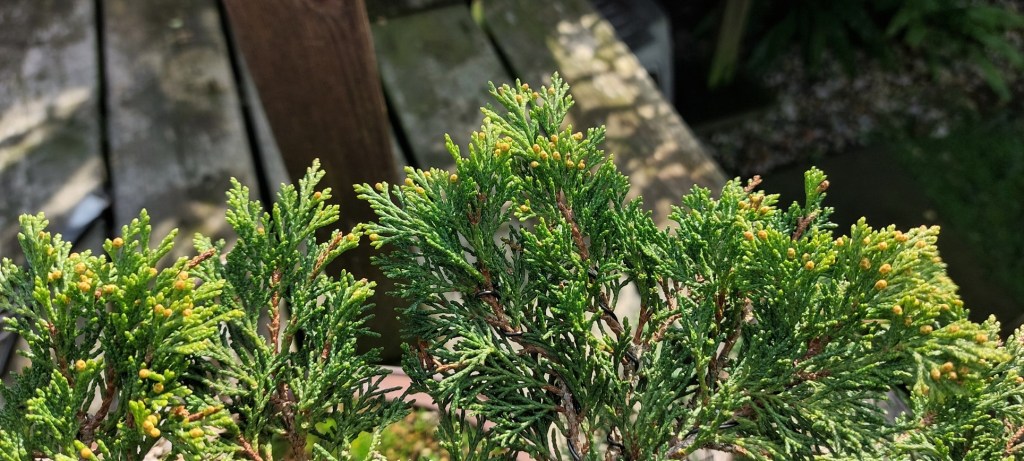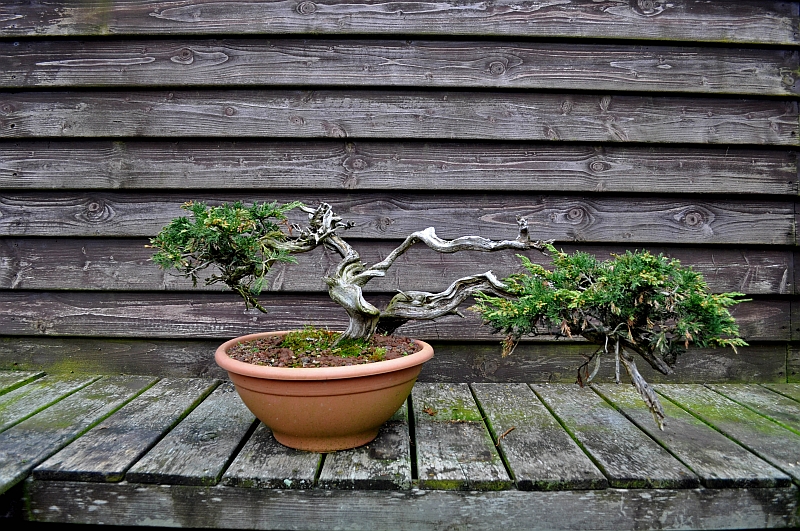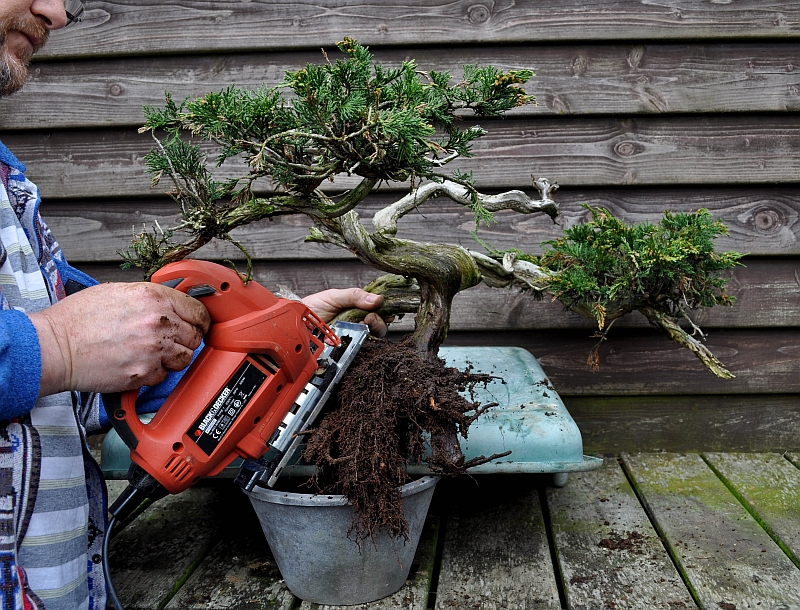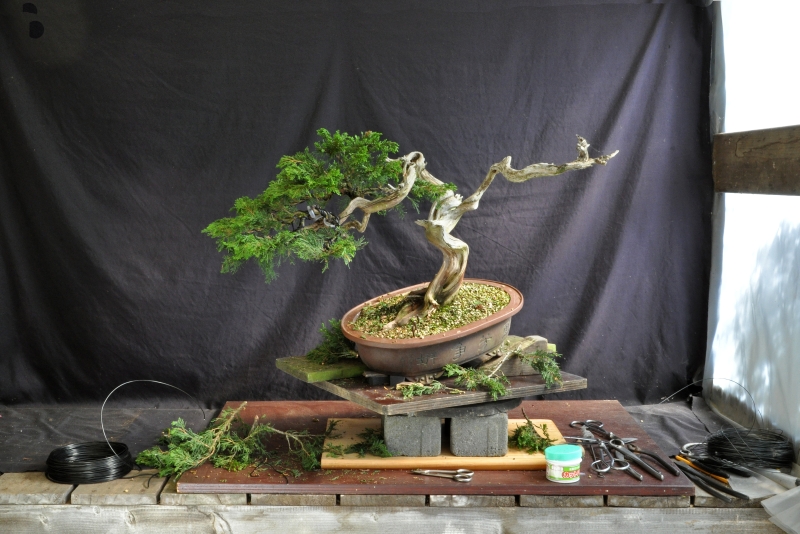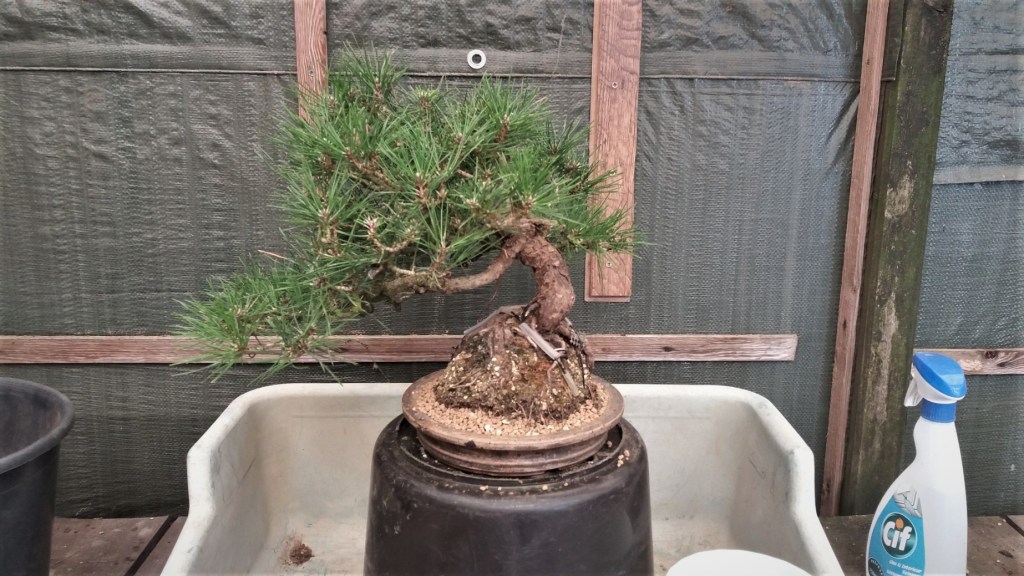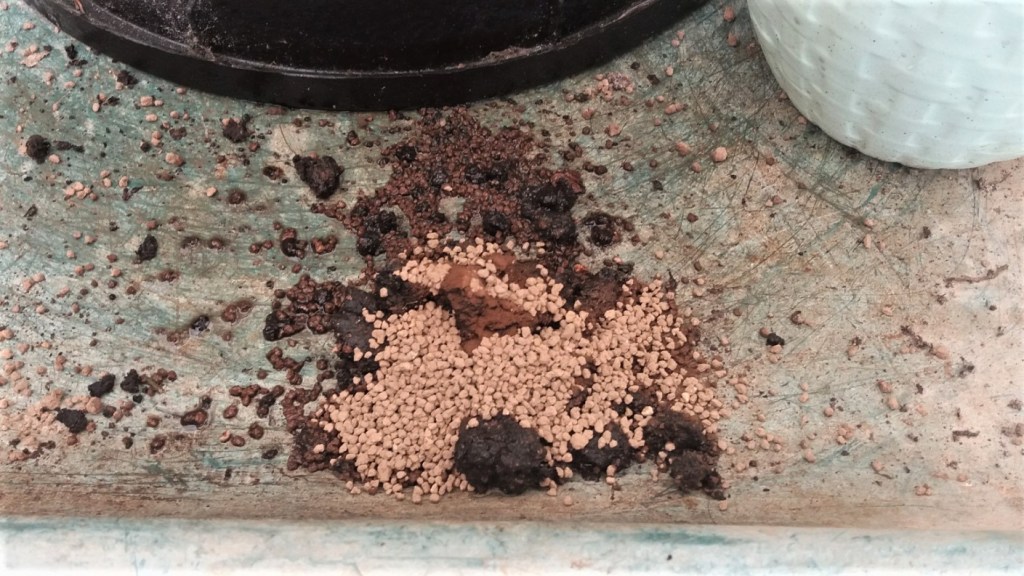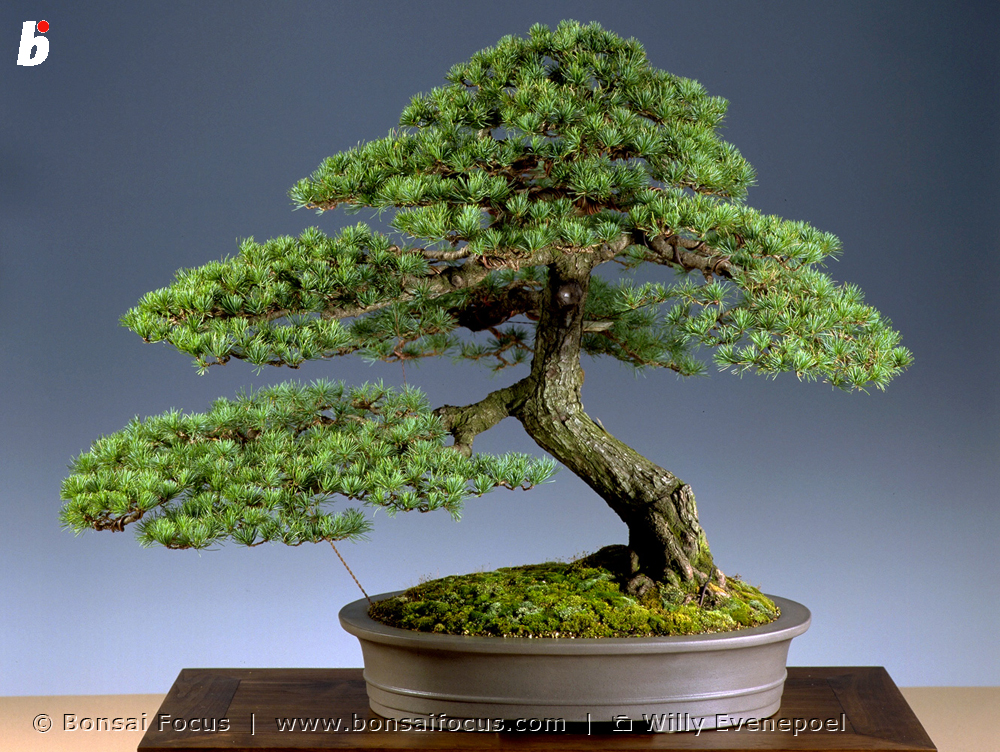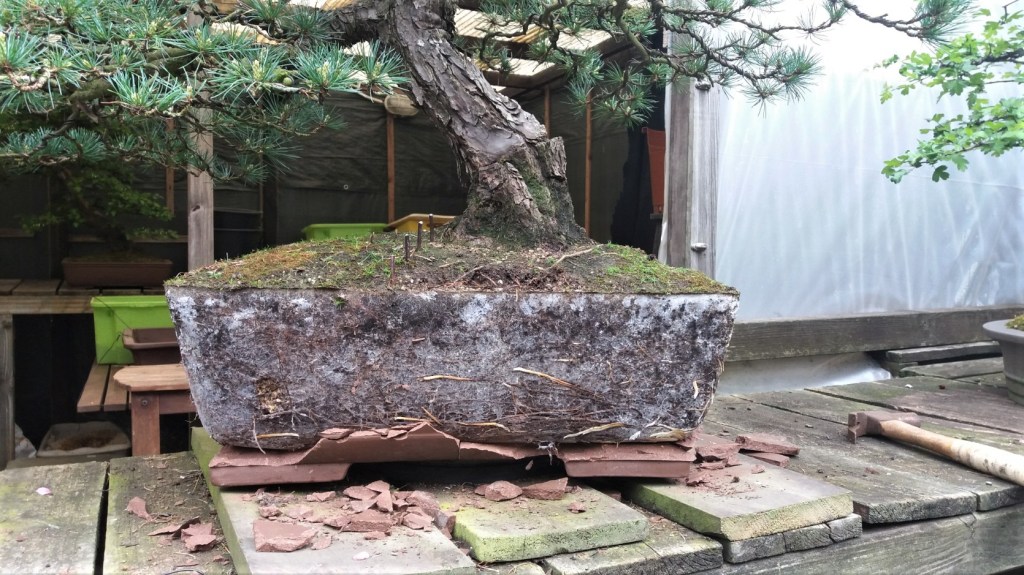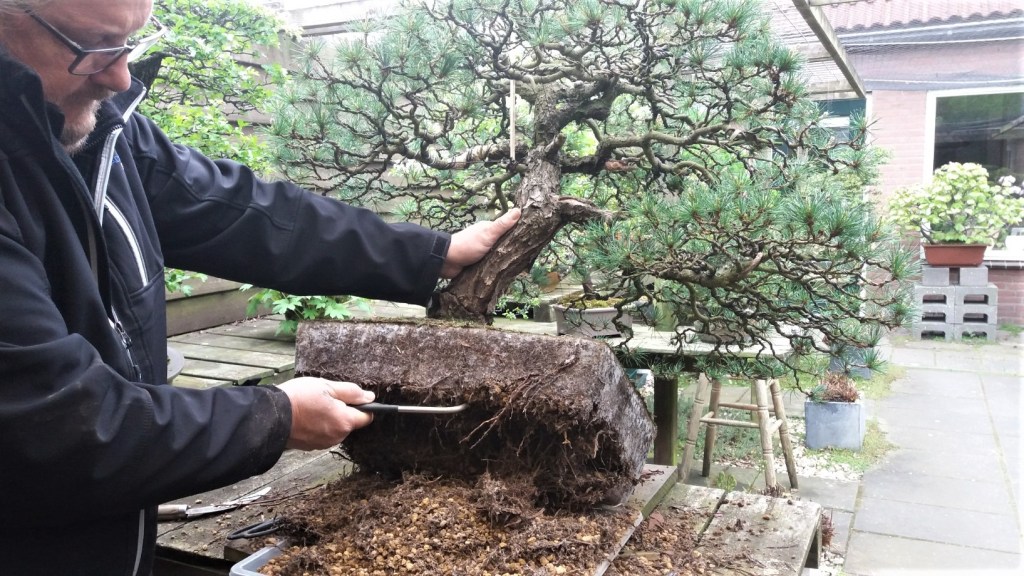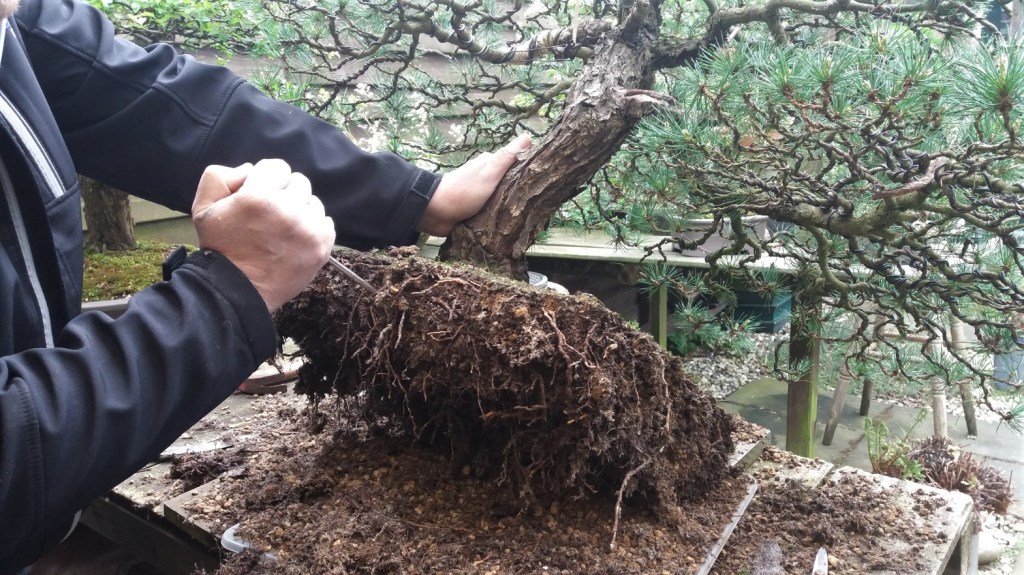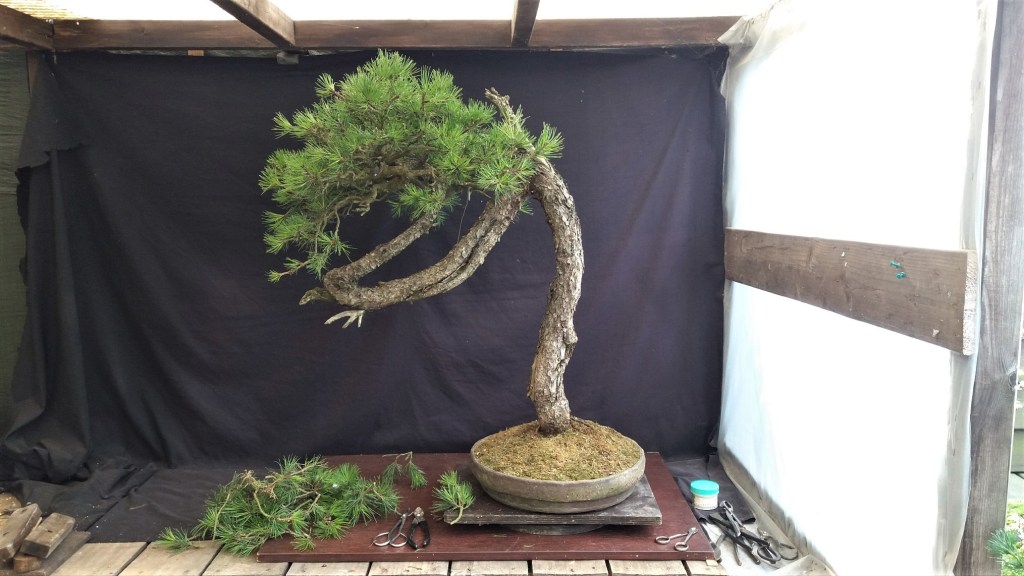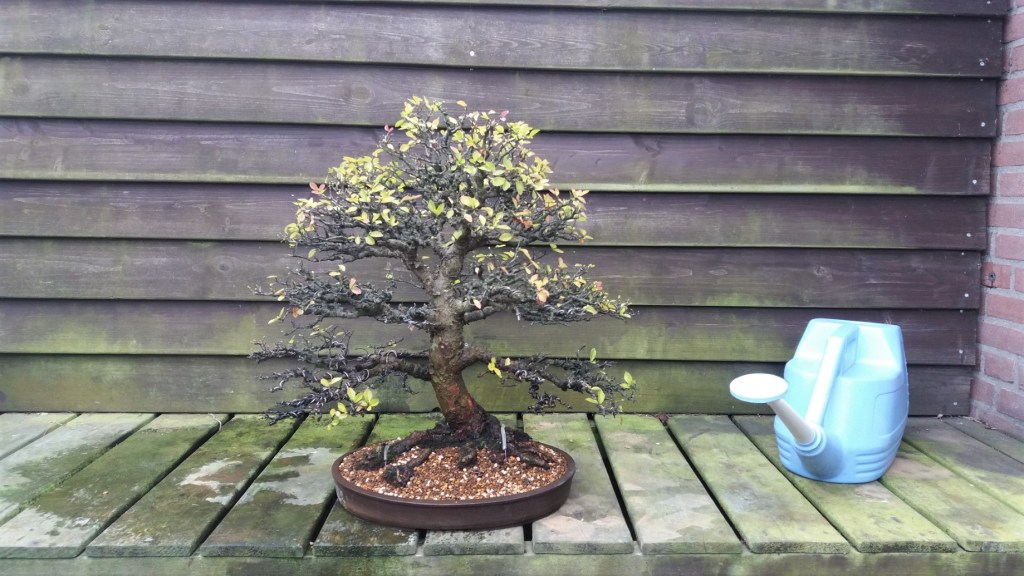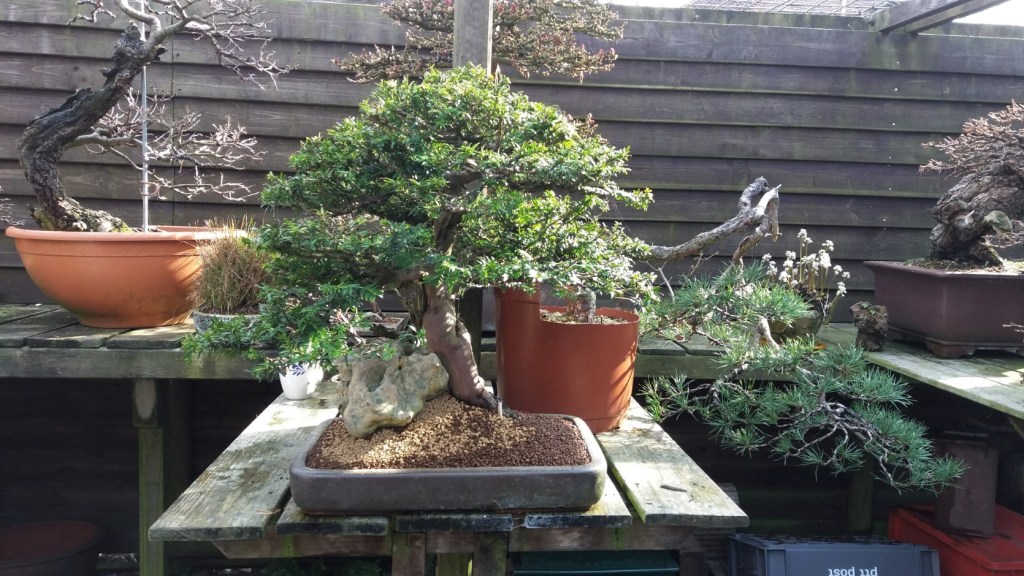Note: Before you read the following serious health warning! Please know that I will still work with Sabina Junipers or any other poisonous Junipers for that matter!!! But I will do so with more care from now on! So this is by no means mend to scare you! But to warn you please be careful with Male Sabina Junipers around the month of May! Or whenever yours has the below Male pollen cones (strobila) in jour part of the world!!!
Below: Male Juniperus Sabina with still tiny jong Male pollen cones (strobilus).

Below: A more mature Male Juniperus Sabina cone with pollen (strobilus).


Above: May 2022. The Juniperus Sabina from this warning! It was shot just before I inhaled the pollen cloud while working on it! In the left bottom corner of that large brown wooden plate, just below that cut-off branch, you can see a few of the tinny brown pollen pods that made me so sick!
Juniperus Sabina health warning!
I thought hard and long about posting my warning about working on and with a male Juniperus Sabina during the period that they have very tiny male brown pollen cones or strobila at the tips of their foliage! My Sabina that’s from the south of Europe do then still tinny brightly green male flowers start to grow around the middle of September on the tips of its typical soft Sabina foliage. And the following year around the month of May, they had grown just a little and had turned into a light brown colour! And seemed to be dried out! And by then ( as I found out later ) were ready to disperse their powdery pollen content! And that was precisely the time that I decided to work on it, not knowing what would or could happen next?! During this wiring, it was inevitable to touch the foliage and while bending a branch a cloud of brown powder-like pollen was disparaged into the air right into my face and eyes! I un avoidable inhaled a large portion of this cloud and immediately started coughing like crazy! This went on for several minutes and then the gag reflexes started and I ended up on my knees on the ground contorting with every painful cough and gag! And this went on for at least ten painful minutes before I was able to stand up and painfully breathe a little without coughing and gagging! The pain in my chest was excruciating, so much so that the next day I had to visit my Dockter! After he examined my ribs and lungs, he told me I had several bruised ribs on both sides of my chest! Today as I write this warning, it is the end of September and four months after my misfortune and my ribs and longs are still very painful with every breath! So much so that next week I have to go to a long specialist for tests and a further examination to find out if my longs are damaged?! So please be very careful if you work on a Juniperus Sabina around May when you see those tiny light brown male pollen pods at the tips of the foliage! Or better still: do your styling or maintenance work earlier when they are still brightly green or later when those pods are empty and dried up!!! And if you do have to handle them during that risky period, well, then make sure to wear a mask and protecting classes and wash your hands when you finish! Believe me, you don’t want to inhale it or get it in your eyes!!! In the Netherlands, we have a saying:
A warned person counts for two!!!
Cheers and stay safe,
Hans van Meer.
Below: 30-9-2022. The same Sabina of this story is now already full of still jong and tinny yellowish-green male pollen pots!
